About me
I am a Machine Learning Researcher. I currently work as a Doctoral Researcher at ETH Zurich, focusing on advancing healthcare with ML-based Digital Biomarkers. My research interests lie at the intersection of AI/ML, medicine, mobile applications and ubiquitous computing.
Having discovered a passion for programming and engineering at age 11, I have acquired diverse skills in various programming languages, systems, and frameworks over the years. I completed multiple projects and applications in the fields of Machine Learning, Computer Vision, Healthcare and Embedded Systems.
I am one of the winners and national finalists of Jugend forscht in 2016. Further, I support the lecture Developing Digital Biomarkers as a teaching assistant, and have supervised around 20 students in their semester, bachelor and master theses.
- Machine Learning Systems
- Explainable Artificial Intelligence
- Mobile- & WearableAI
- Digital Biomarkers & Healthcare
- Realtime ML Applications
- Embedded- & Distributed Systems
- Computer Vision
-
PhD in Machine Learning & Applied Computer Science, 2025 (expected)
ETH Zurich - Swiss Federal Institute of Technology
-
MSc in Computer Science - Machine Learning & Medical Technologies, 2021
Ilmenau University of Technology
-
BSc in Computer Science, 2020
Ilmenau University of Technology
Experience
I am currently a third year PhD researcher, focusing on machine learning in healthcare as well as on mobile- and edge devices. My research topics include:
- Cross-platform, mobile-, wearable- & edge AI: CLAID
- Explainable AI (xAI) for healthcare, especially Explainable Deep Learning Extrinsic Regression Methods
- Machine-learning based Digital Biomarkers for chronic diseases (e.g., Asthma)
Additionally, I am a teaching assistant for the lecture Developing Digital Biomarkers.
I completed various projects for different clients worldwide, especially in the fields of:
- Computer vision (human activity recognition, change detection)
- Machine learning Apps (on-device image analysis)
- Embedded engineering (UltraZED platforms, PetaLinux, VitisAI).
List of clients and projects under NDA.
As a research engineer, I worked on machine learning applications in medicine (especially Parkinson), and embedded applications for space- and high radiation environments.
- Trained Neural Networks such as Temporal Convolution Networks (TCNS), Time-Delay Neural Networks (TDNNs) and LSTMs for Freezing of Gait (FoG) detection
- Implemented FoG detection models on embedded devices and FPGAs, adhering to strict realtime requirements
- Developed a generic FPGA-based test platform for Radiation Hardness tests (RadHard) of custom ICs, such as shift registers and memory
As a research engineer, I worked on medical sensors and medical applications.
- Worked on the digital design and implementation of biosensors to detect and analyze diseases, e.g. cytokine release syndrome or tuberculosis
- Implemented a smartphone App for the detection of skin cancer from images using CNNs
Optimized a proprietary FPGA hardware accelerator implementation for Convolutional Neural Networks and computer vision algorithms for person detection and -segmentation from RGB videos in the context of autonomous driving on a SoC platform.
- Reduced combined CPU pre- and postprocessing times from 800ms per frame to 55ms per frame by speeding up calculations using SIMD (Arm NEON)
- Reduced inference time of the FPGA hardware accelerator (written in HLS) from 240ms to 140ms per frame by redesigning the accelerator from the ground up in order to use an optimized memory layout and achieve better resource utilization (increased utilization of DSP-Units from 70% to 95%)
Worked on indoor robotic applications in the context of patient-assistance, rehabilitation and elderly care.
- Implemented models for person detection and pose recognition
- Integrated hardware acceleration and optimizations for computer vision models into a robotic middleware leveraging TensorRT and ONNXRuntime
- Developed computer vision algorithms and a 3D mapping framework for semantic mapping
- Explored automatic conversion of computer vision models to FPGA implementations for power-efficient hardware acceleration as an alternative to embedded GPUs
Projects & Research Overview
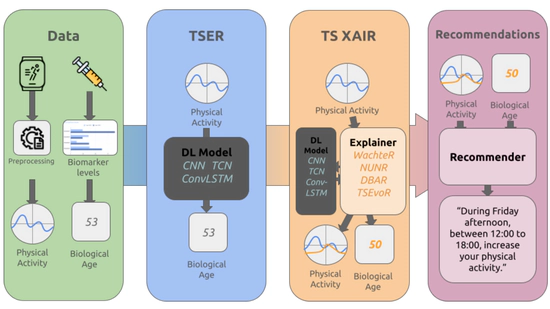
TSXAI - Explainable Deep Learning Time-Series Extrinsic Regression Methods in Health
Explainable deep-learning time series extrinsic regression methods based on counterfactual approaches and evolutionary algorithms. The goal is to generate recommendations for improving general health using time-series models (TCNs) for biological age estimation.

Alex - Design, Development and Evaluation of a Digital Health Assistant for Paediatric Asthma
Development of a Health Asistant for asthma. Using 5 digital sensors and AI methods to passively assess track symptons and predict exacerbations in a 1-year-long study with 160 participants.
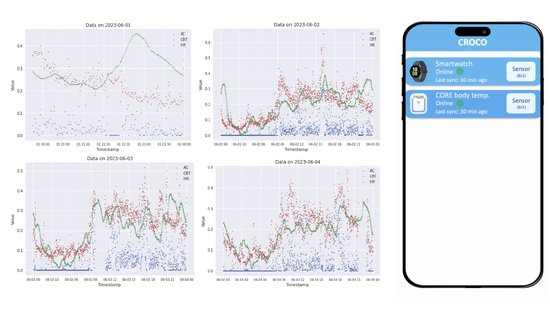
CROCO - Using Commercial Wearables for Circadian Rhythm Home Monitoring
Longitudinal tracking of circadian rhythms of individuals using commercial devices in a 14-day study with 36 participants.
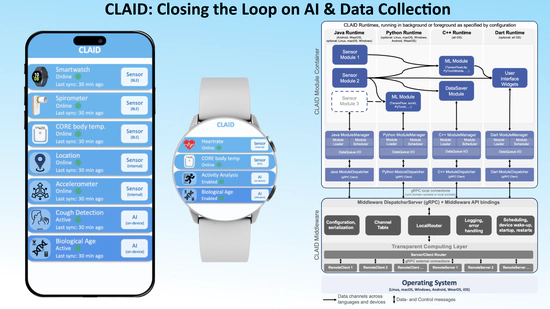
CLAID - Closing the Loop on AI & Data Collection
An open-source cross-platform, cross-language framework for machine-learning- and data collection applications across cloud, edge, mobile and wearable devices. Supports to run ML models directly in Python, even on Android and WearOS.
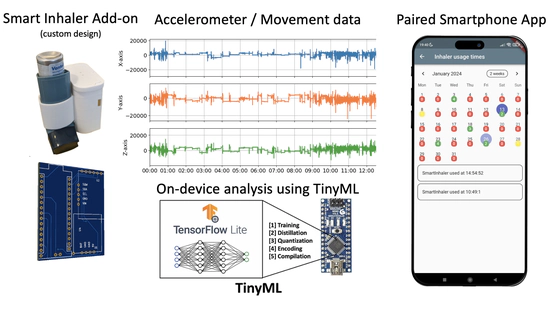
Open Source AI-enabled Smart Inhaler for Asthmatic Patients
Development of a novel open source smart inhaler compatible with the three most common inhaler types (MDI, Turbuhaler and Diskus). Using passive sensors such as accelerometers to infer inhaler usage using machine learning.
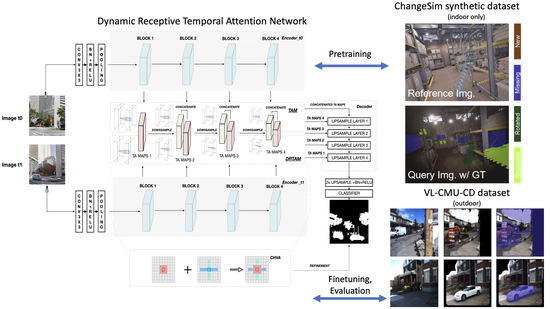
Visual Scene Change Detection from RGB Images
Implementation of an outdoor Visual Scene Change Detection (VSCD) using deep learning computer vision models, outperforming state of the art approaches by pretraining on much larger indoor datasets (ChangeSim).
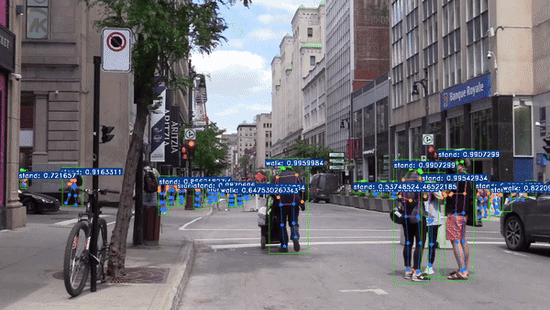
Realtime-capable Human Activity Recognition
Implemention of realtime capable Human Activity Recognition (HAR) approach based on deep learning models SlowFast and PoseC3D. A major challenge was slow the inference speed of current state-of-the-art models. Several improvements have been made to achieve realtime inference (10+ FPS).
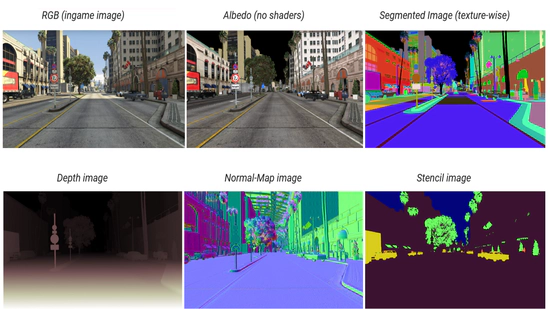
Grand Theft Data Five
Modification of a popular video game to extract high-quality synthetic data for autonomous driving scenarios, such as road sign annotations, person pose estimation and object segmentation. Segmentations were extracted by hijacking the rendering pipelines of the game and extracting images at various stages of the rendering process.
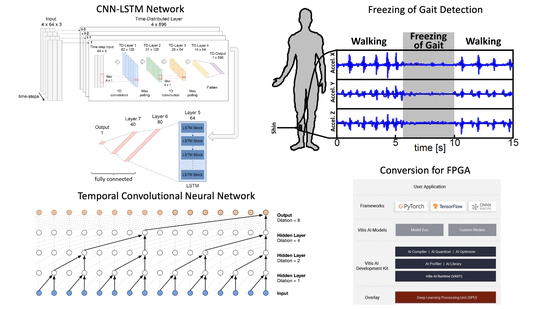
FPGA-Based Realtime Detection of Freezing of Gait in Parkinson Patients Using Neural Networks
Trained and implemented Temporal Convolutional Neural Networks (TCNs) for detecting Freezing of Gait. Deployed the neural networks on FPGAs using VitisAI, adhering to strict realtime requirements.
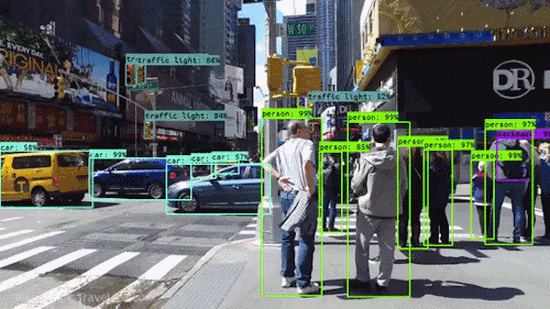
Acceleration of CNNs for Person Detection in Autonomous Driving using FPGA’s and SIMD
Implemented a hardware accelerator for Convolutional Neural Networks for person detection on FPGAs using HLS. Implemented highly optimized pre- and postprocesing of images using SIMD on a microcontroller. Outperformed previous results by 5x (1040ms to 195ms per frame).
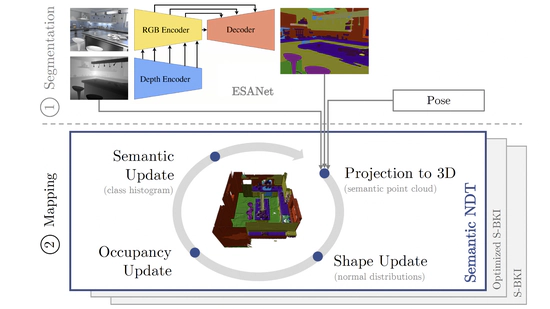
Efficient Semantic 3D Mapping for Indoor Environments
Implementation of a realtime-capable 3D semantic mapping framework based on Normal Distribution Transform (NDT) and semantic histogram maps. Mapping leverages hardware acceleration on embedded devices using TensorRT.
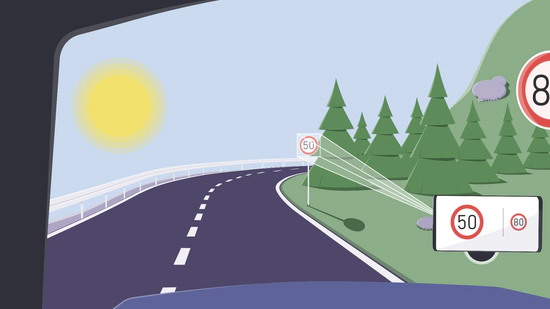
Signapse - Realtime Road Sign Recognition on Smartphones
A realtime road sign recognition App for smartphones incorporating object detection and classification (SSDLite, MobileNet), optionally using hardware acceleration (CoreML, TensorFlow). Currently standing at 5000+ downloads.
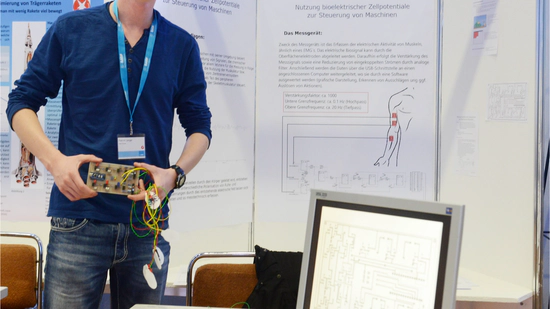
Biopotential based Human-Machine-Interaction
Designed and built (PCB, soldering, programming) from the ground up a device capable to record and analyze biosignals via electromyografie using electrodes. Allows to play games and write texts. Presented at the Jugend forscht national finals 2016.
Featured Publications
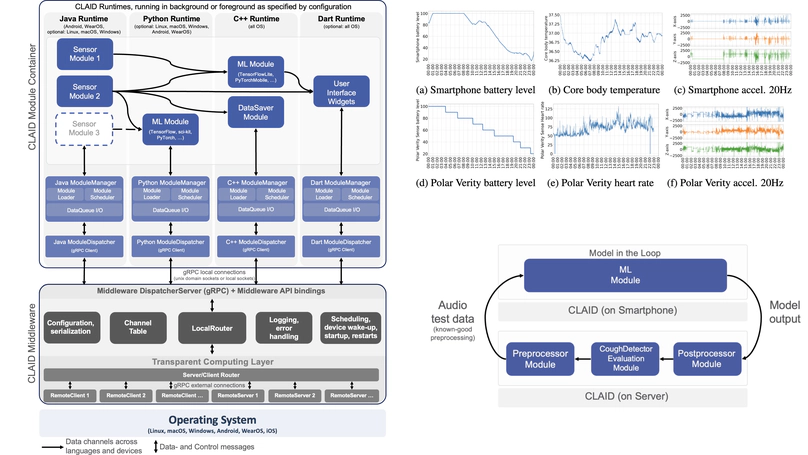
In this paper, we present CLAID, an open-source cross-platform middleware framework based on transparent computing compatible with Android, iOS, WearOS, Linux, macOS, and Windows. CLAID enables logical integration of devices running different operating systems into an edge-cloud system, facilitating communication and offloading between them, with bindings available in different programming languages. We provide Modules for data collection from various sensors as well as for the deployment of machine-learning models. Furthermore, we propose a novel methodology, ML-Model in the Loop for verifying deployed machine learning models, which helps to analyze problems that may occur during the migration of models from cloud to edge devices. We verify our framework in three different experiments and achieve 100% sampling coverage for data collection across different sensors as well as an equal performance of a cough detection model deployed on both Android and iOS devices. Additionally, we compare the memory and battery consumption of our framework across the two mobile operating systems.
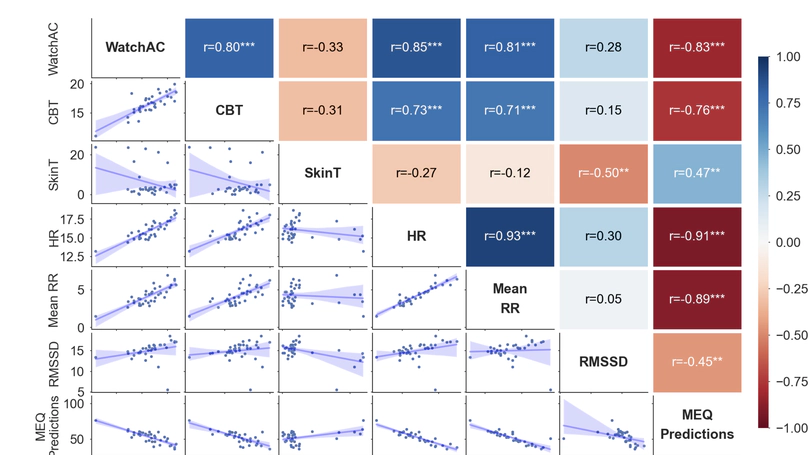
Circadian rhythms govern biological patterns that follow a 24-hour cycle. Dysfunctions in circadian rhythms can contribute to various health problems, such as sleep disorders. Current circadian rhythm assessment methods, often invasive or subjective, limit circadian rhythm monitoring to laboratories. Hence, this study aims to investigate scalable consumer-centric wearables for circadian rhythm monitoring outside traditional laboratories. In a two-week longitudinal study conducted in real-world settings, 36 participants wore an Actigraph, a smartwatch, and a core body temperature sensor to collect activity, temperature, and heart rate data. We evaluated circadian rhythms calculated from commercial wearables by comparing them with circadian rhythm reference measures, i.e., Actigraph activities and chronotype questionnaire scores. The circadian rhythm metric acrophases, determined from commercial wearables using activity, heart rate, and temperature data, significantly correlated with the acrophase derived from Actigraph activities (r=0.96, r=0.87, r=0.79; all p<0.001) and chronotype questionnaire (r=-0.66, r=-0.73, r=-0.61; all p<0.001). The acrophases obtained concurrently from consumer sensors significantly predicted the chronotype (R2=0.64; p<0.001). Our study validates commercial sensors for circadian rhythm assessment, highlighting their potential to support maintaining healthy rhythms and provide scalable and timely health monitoring in real-life scenarios.

Encouraging people to manage their health is essential in preventing chronic diseases like type 2 diabetes and heart disease. With mobile technologies such as health apps and fitness trackers, monitoring health has become more accessible and affordable compared to doctoral visits and traditional health check-ups. These technologies are, however, mainly used for disease management rather than prevention and there is no common understanding of how they can best be used for preventive purposes. To this end, we introduce the Bitemporal Lens Model a comprehensive method to use mobile technologies for disease prevention. We explain the structure and usefulness of the Bitemporal Lens Model, discuss its advantages and limitations, and present potential use cases.

A key proficiency an autonomous mobile robot must have to perform high-level tasks is a strong understanding of its environment. This involves information about what types of objects are present, where they are, what their spatial extend is, and how they can be reached, i.e., information about free space is also crucial. Semantic maps are a powerful instrument providing such information. However, applying semantic segmentation and building 3D maps with high spatial resolution is challenging given limited resources on mobile robots. In this paper, we incorporate semantic information into efficient occupancy normal distribution transform (NDT) maps to enable real-time semantic mapping on mobile robots. On the publicly available dataset Hypersim, we show that, due to their sub-voxel accuracy, semantic NDT maps are superior to other approaches. We compare them to the recent state-of-the-art approach based on voxels and semantic Bayesian spatial kernel inference~(S-BKI) and to an optimized version of it derived in this paper. The proposed semantic NDT maps can represent semantics to the same level of detail, while mapping is 2.7 to 17.5 times faster. For the same grid resolution, they perform significantly better, while mapping is up to more than 5 times faster. Finally, we prove the real-world applicability of semantic NDT maps with qualitative results in a domestic application.

In this paper we report on our implementation of a temporal convolutional network trained to detect Freezing of Gait on an FPGA. In order to be able to compare our results with state of the art solutions we used the well-known open dataset Daphnet. Our most important findings are even though we used a tool to map the trained model to the FPGA we can detect FoG in less than a millisecond which will give us sufficient time to trigger cueing and by that prevent the patient from falling. In addition, the average sensitivity achieved by our implementation is comparable to solutions running on high end devices.
Awards & Honors
Contact
- planger@ethz.ch
- ETH Zurich, Centre for Digital Health Interventions, Room G214, Weinbergstrasse 56/58, Zurich, ZH 8006